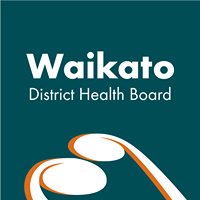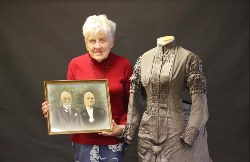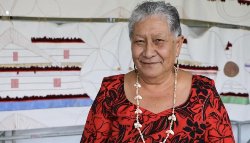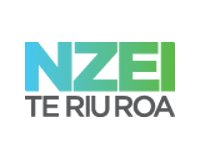Media Release
Date: 15 November, 2012
Remote access a
life saver
Sabaratnam Muthukumaraswamy has been looking at x-rays and scans and giving advice on what action to take for more than 30 years at Waikato Hospital. But recently implemented technology means he can now do it remotely – saving time and lives.
The Picture Archive Communication System
(PACS) and its associated Radiology Information System (RIS)
are now widely used at the hospital and Midlands
region.
Known as Dr Muthu, the clinical director of
radiology says the remote viewing of images, which began
three months ago, is one of the biggest leaps forward in his
time.
“All my colleagues and I had been looking forward to this for a while. It’s made a big difference to our lives and the lives of patients.”
Dr Muthu can now look at images from home and deliver advice, and the 20 minutes saved by not having to come into the hospital can be vital to patients in a critical situation.
Just recently Dr Muthu was asked to look at images from Hawke’s Bay where a man with a contained ruptured aorta was in a bad way and unable to get into Wellington Hospital. “I looked at the pictures, got the patient here, and we fixed him up. He would have died for certain.’’
Often it is his call on surgery and that decision is made on what can be seen. “I have to say yes we can fix it, or no.’’
Saving 20 minutes by viewing remotely from home is “a great help”.
“It’s a time-saver and a life-saver. We are 20 minutes ahead of time if we see it at home and can start getting the [surgical] team assembled for a bleeder or other life-critical situation.”
Time is also saved as reports can also be acknowledged remotely, changing the “report pending” status from a day or days to hours. “That just speeds up the whole process.”
Hamilton orthopaedic surgeon Neville Strick is another who sees great benefits in being able to bring up images “on the fly”.
There are obvious advantages for his patients now he can view scans wherever he is – at his private practice, at Southern Cross Hospital, at home or “when I’m out and about”.
“It’s all about convenience and time,” he says, adding patients get a better management plan as a result.
Another benefit for patients is less radiation as less repeats are needed. Mr Strick can press ahead with an operation without the need for a new scan because he has access to the latest image archived in the Midlands system. That has the potential to cut radiology waiting lists.
The Waikato DHB
roll-out of PACS includes all clinics which have moved into
the new Meade Clinical Centre, and is part of the
“paperlite” philosophy
PACS, implemented two years ago, gives healthcare providers instant access to diagnostic images and results as the images go into a central database. It’s a regional system, with Bay of Plenty and Tairawhiti (Gisborne) joining with Waikato DHB to improve information sharing for the benefit of patients.
PACS was recently ramped up, two years after its start, to allow remote access to the archive from PCs and tablet devices.
For PACS project manager Shelley Baker and business analysis and technology driver Jonathan Hall, their work is coming to an end with the handover to Waikato Hospital’s Information Services. They have lived and breathed PACS, its archive extension, and various specific clinical applications.
“It’s been great to implement a system which has far-reaching benefits for both the patients and the clinicians,” Jonathan and Shelley said.
“For a project that covered such a wide variety of stakeholders and involved so many different processes, technologies and specialties, the buy-in and enthusiasm from the stakeholders have been key factors in ensuring the project’s success.”
Hospital group manager Mark Spittal agreed: “The extended PACS project has been an outstanding piece of work. It is now delivering real benefits for our clinicians and patients every day.
“The project was delivered on time, well under budget, and with genuinely high levels of engagement from a broad range of clinical and technical staff. Its success is a huge credit to everyone involved.”
ENDS
Check out our media releases on www.waikatodhb.health.nz/news or
About Waikato District Health Board
and Health Waikato:
Waikato DHB is responsible for
planning, funding and providing quality health and
disability support services for the 372,865 people living in
the Waikato DHB region. It has an annual turnover of $1.2
billion and employs more than 6000 people.
Health Waikato is the DHB’s
main provider of hospital and health services with an annual
budget of more than $701 million and 5238 staff. It has six
groups across five hospital sites, three primary birthing
units, two continuing care facilities and 20 community bases
offering a comprehensive range of primary, secondary and
tertiary health services.
A wide range of independent providers deliver other Waikato DHB-funded health services - including primary health, pharmacies and community laboratories.



 Braden Currie: Sets Sights On The Ironman North American Championships In Texas
Braden Currie: Sets Sights On The Ironman North American Championships In Texas Whanganui Regional Museum: Historic Wedding Dress Unveiled, A Piece Of Marton’s Heritage
Whanganui Regional Museum: Historic Wedding Dress Unveiled, A Piece Of Marton’s Heritage Donovan Ryan: Local Runner Takes Out Frontrunner Christchurch Marathon
Donovan Ryan: Local Runner Takes Out Frontrunner Christchurch Marathon University of Auckland: Tributes Flow For Much Loved Pacific Leader Melegalenu’u Ah Sam
University of Auckland: Tributes Flow For Much Loved Pacific Leader Melegalenu’u Ah Sam NZEI: Ministry Of Education Cuts Will Disproportionately Affect Pasifika
NZEI: Ministry Of Education Cuts Will Disproportionately Affect Pasifika Day One Hapai te Haeata: Call To Action For Young Filmmakers Against The Backdrop Of Funding Cuts
Day One Hapai te Haeata: Call To Action For Young Filmmakers Against The Backdrop Of Funding Cuts